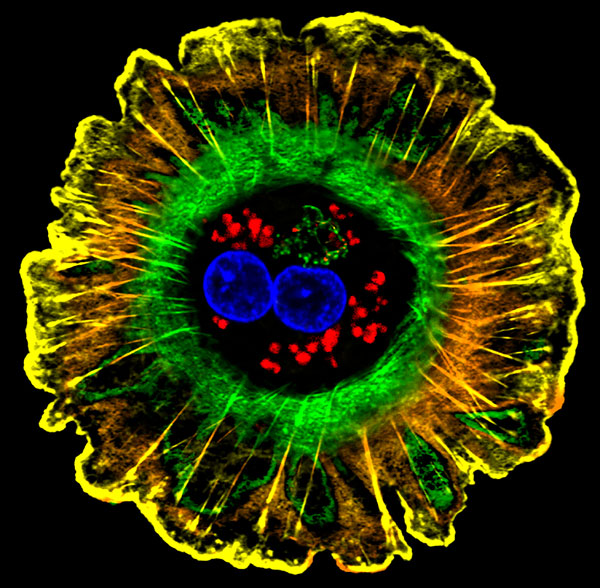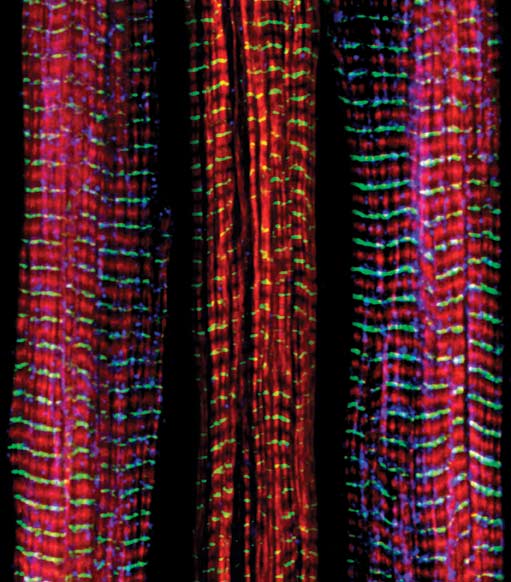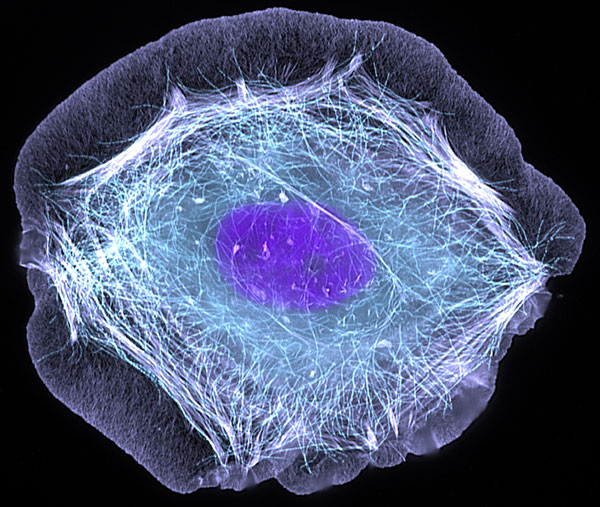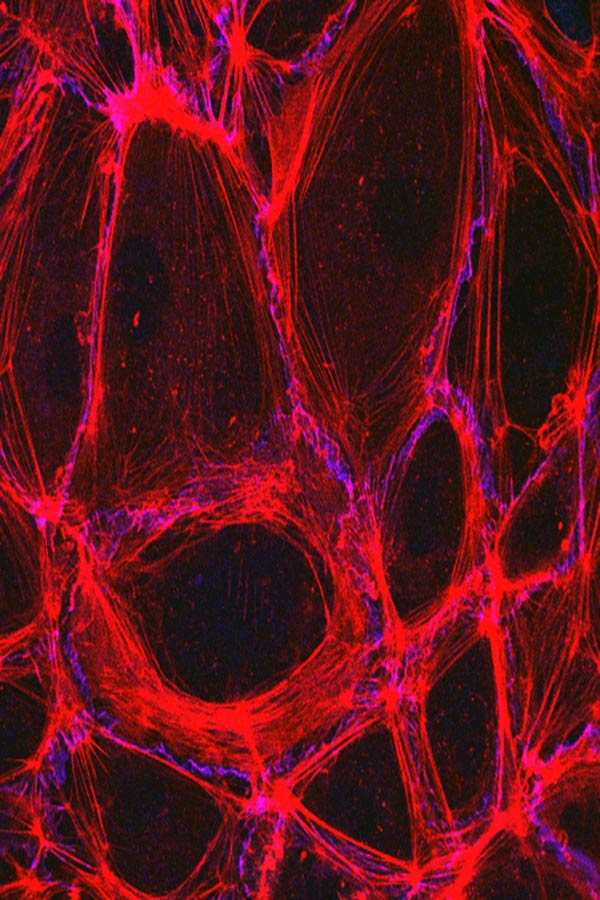The Fireworks Inside Us All
Celebrating in style

Scientists regularly watch spectacular microscopic bursts of activity happening inside us and other organisms. Using imaging techniques, including colorful dyes and graphic design programs, they generate pictures that could compete for the "oohs and ahhs" at any fireworks show. The grand finale: a better understanding of fundamental life processes that contribute to health and disease.
Here are just a few glimpses into cells captured by scientists in the course of their research funded by the National Institutes of Health. To see more fireworks on a microscopic scale, visit the online gallery for “Life: Magnified,” an exhibit of scientific images on display through November 2014 at Washington Dulles International Airport.
Liver Cell

Hepatocytes, like the one shown here, are the most abundant type of cell in the human liver. They play an important role in building proteins, producing bile (a liquid that aids in digesting fats) and chemically processing naturally occurring molecules like hormones as well as foreign substances like medicines and alcohol.
Nerve Cells in the Eye

Here we see the many layers of nerve cells in the retina of a ground squirrel. The top layer (green) is made up of cells called photoreceptors. These cells convert light into electrical signals that travel to the brain. The two best-known types of photoreceptors are rod and cone cells. Rods help us see under low-light conditions, and cones allow us to see vibrant colors in daylight.
Muscle Fibers

Of the three chicken muscle fibers shown here, the ones on the right and left are normal. The middle fiber is deficient in a protein called nebulin, which appears blue in the other fibers. Nebulin is critical to the structure and function of muscles, and its absence is associated with certain neuromuscular disorders.
Skin Cell

Skin Cell This normal human skin cell has been treated with a natural chemical that triggers the formation of specialized protein structures that enable the cell to move. We depend on cell movement for such basic functions as wound healing and launching an immune response.
Fibroblasts

Fibroblasts The cells shown here are fibroblasts, one of the most common cells in mammalian connective tissue. These particular cells came from a mouse. Scientists used them to test the power of a new microscopy technique that offers vivid views inside a cell. The mitochondria (green), cellular skeleton (red) and DNA within the nucleus (blue) are clearly visible.
Cells Lining Blood Vessel Walls

This image captures the structure of a human endothelium, the thin layer of cells that lines our arteries and veins. The endothelium is a gatekeeper, controlling the movement of materials into and out of the bloodstream. Endothelial cells are held tightly together by specialized proteins that function like strong ropes (red) and others that act like cement (blue).
This Inside Life Science article was provided to LiveScience in cooperation with the National Institute of General Medical Sciences, part of the National Institutes of Health.
Get the world’s most fascinating discoveries delivered straight to your inbox.
 Live Science Plus
Live Science Plus






